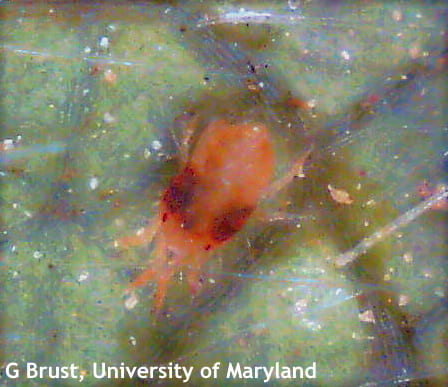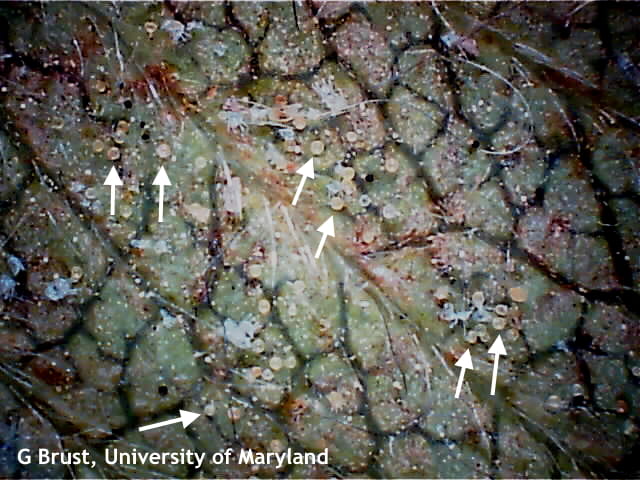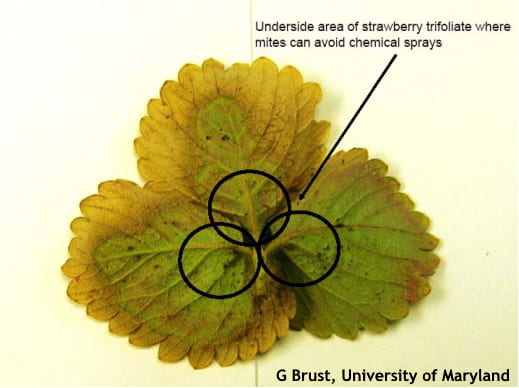Jerry Brust, IPM Vegetable Specialist, University of Maryland; jbrust@umd.edu
I visited some strawberry fields over the last few days in Maryland. Most of the strawberry fields were on plastic but some were matted row production and a few in high tunnels. With the cooler weather we have had of late I was surprised to still find low levels of mites in the fields, with a few hot spots of mites in some high tunnels. There was only one species of mite found: the two spotted spider mite, Tetranychus urticae. Overwintering female two spotted spider mites are an orangish-red (Fig. 1) and most of the mites that can be seen with a naked eye will appear reddish in color. Spider mites overwinter in the soil or leaf litter, although they may remain somewhat active in high tunnels through the winter. I found mite eggs in several high tunnel strawberries, but not in any outdoor strawberries. The light yellowish eggs are pearl-like in appearance and are attached to the undersides of leaves or stems (Fig. 2). Feeding damage by mites that occurs before fruiting can cause the most loss in yield, but after the first strawberry harvest plants can tolerate much greater rates of infestation. Growers should check their strawberries for mites now, especially if you have them in a high tunnel. If mites are found now you need more than 5 mites per leaflet (1/3 of a leaf) to justify the expense of a miticide application.
The most difficult thing to achieve for good control is getting adequate spray coverage. Many of the spray applications do a good job of covering the top of the leaves but do a poor job of reaching the underside of the trifoliate. The underside area of the leaf that usually sees very little chemical deposition is in the ‘palm’ of the leaf (Fig. 3). These are the areas where mites can still be found even after a few sprays and need to be carefully checked a few days after an application. Good coverage is essential. One grower uses a leaf blower-like backpack fogger-atomizer sprayer and applies two sprays of 1% (by volume) horticultural oil 7-10 days apart. He gets excellent spray coverage on the underside of his leaves and consequently excellent control of mites. By using two applications about one week apart it is possible to control not only the adults and nymphs, but the eggs too. Oil is a good management tactic to use at this time of year as the plants are small and any possible burn from using the oil is a very low risk. An added benefit of the oil is that it is rather inexpensive. I would like to see more growers use something like oil now and save the other chemicals for later in the season when plants are much bigger and there is a flare up of mites or other pests. Using oils now will also greatly reduce any development of mite resistance to other chemicals over the course of the season. If miticides are needed there are many excellent miticides available.
Figure 1. Overwintered two spotted spider mite female with orangish-red coloration.
Figure 2. Many two spotted spider mite eggs (arrows) on back of a leaf
Figure 3. Underside areas of strawberry leaf where mites can hide from spray applications



